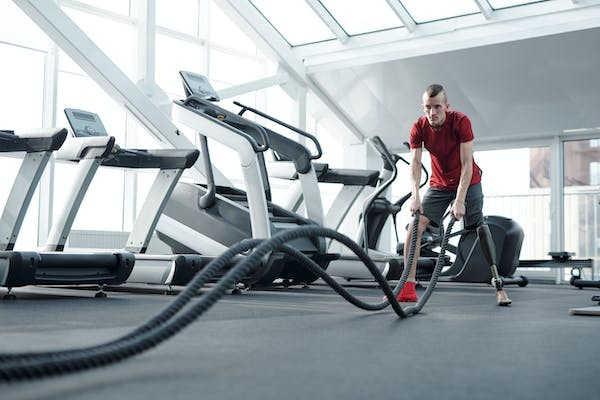Growing crops from low THC cannabis seeds provides an excellent source of CBD for muscle recovery and good fun to boot. If you’re curious about cannabidiol’s role in optimizing your workout regime, keep reading.
What is CBD?
Cannabidiol (CBD) is a compound naturally present in cannabis. While the atoms that make up CBD are identical to those in THC, their structure differs. This slight variation results in significant differences when it comes to effects.
Tetrahydrocannabinol (THC) makes marijuana psychoactive, and its presence is highly desirable for recreational users. CBD, on the other hand, is non-psychoactive but can be beneficial for the body.
Most products containing CBD use oil extracted from the cannabis plant. These extracts are grouped into three categories, as outlined below.
- Full-spectrum: Products in this category contain all the cannabinoids, terpenes, and flavonoids from the plant. As a result, they contain less than 0.3% THC, with higher amounts of other compounds that have potential healing properties.
- Broad-spectrum: This type of extract is similar to full-spectrum but generally doesn’t contain any THC. In some cases, there may be minimal traces of tetrahydrocannabinol. If you’re trying to avoid that, you should go for CBD isolate.
- CBD Isolate: Contains only CBD, with none of the additional cannabinoids or terpenoids found in the previous two. Products made from isolate absorb into the skin easily, making them the preferred choice for topical formulations.
In recent years, the number of people using CBD and working out has increased. Let’s see what all the fuss is about and find out if this compound can improve the quality of your workout.
What Does the Research Say?
Although we’re not exactly flying blind, research into CBD is far from definitive. Some valuable progress has already been made, with more likely to come in the future.
So far, most work has focused on CBD’s general physiological effects. These studies show that it has powerful anti-inflammatory properties and anti-anxiolytic and sleep-enhancing qualities.
The compound’s anti-inflammatory properties are particularly valuable to athletes and anyone who exercises regularly.
Pushing past your comfort zone is all part of the self-improvement process, but it can leave you feeling sore and stiff. Delayed onset muscle soreness (DOMS) is a common symptom of strenuous activity but a problem that CBD can help with.
A recent study on cannabis and exercise showed that CBD might help treat exercise-induced muscle damage (EIMD) and DOMS. Scientists sublingually administered 1ml of medium-chain triglyceride (MCT) oil containing 16.67mg of CBD immediately after a series of exercises.
The scientists asked subjects to self-assess their muscle soreness using a visual analog scale (VAS) measuring 1–100. The VAS was used immediately after exercising and at further intervals of 24, 48, 72, and 96 hours.
Researchers found that against their control group, those who administered CBD post-workout experienced less DOMS over time. They concluded that while more research is required to understand its mechanisms, CBD oil is an effective treatment for EIMD.
Is CBD Safe to Use?
CBD is considered safe for use and is mostly legal in the US. Some states have strict restrictions on it, so ensure you know your local laws before using it.
Additionally, it’s not on the World Anti-Doping Agency’s (WADA) list of banned substances. Not all extracts are equal, and some contain small amounts of THC, which WADA still prohibits.
If you’re a professional considering using CBD, stick to an isolated product. While extracts containing less than 0.3% THC are legal, WADA is quite strict about it, so it’s wise to stick to pure cannabidiol products.
Consuming large amounts of CBD may result in mild side effects such as drowsiness, dry mouth, or changes in appetite. That said, most extracts don’t contain enough to elicit such reactions.
Keep reading to discover how to find a suitable extract for you.
How to Incorporate Hemp Into Your Post-Workout Recovery
If you’re on the quest to improve your health, using weed after your workout in the form of CBD has great potential. Here are some tips to help you effectively incorporate this versatile compound into your recovery routine.
Choose Your Product Carefully
With a current lack of federal oversight or regulations, the quality of CBD extracts on the market varies wildly. Always choose a brand that opts for third-party testing to ensure the purity and efficacy of the product.
Find Your Dosage
Getting the dosage right when using CBD after your workout treatment is tricky. Everyone’s body reacts differently to the compound, so you’ll need to figure out what works for you.
The study quoted above used 16.67mg to significant effect, so start with a similar amount and work your way up.
Timing is Key
CBD extracts take time to circulate through the body, so you should use your chosen application method immediately post-workout. The sooner those anti-inflammatory compounds get to work, the better.
Make Your Own Extracts
A 2017 study revealed that almost 70% of tested products didn’t contain the amount of CBD advertised on the label. While that number is hopefully lower today, there’s only one guaranteed way to ensure quality.
Cultivating your own high CBD cannabis and whipping up a batch of homemade extracts is relatively simple and lots of fun. Do some research on the best place to buy cannabis seeds online, then get growing.
Keep Yourself in Fighting Form With CBD
While experts still need to do more research before fully understanding this wondrous compound, CBD for muscle recovery has vast potential. Thanks to its non-harmful nature and legal status, we can test its effectiveness in our workout routines without worry.
Try hemp or CBD for yourself; it may significantly boost your post-workout recovery.




